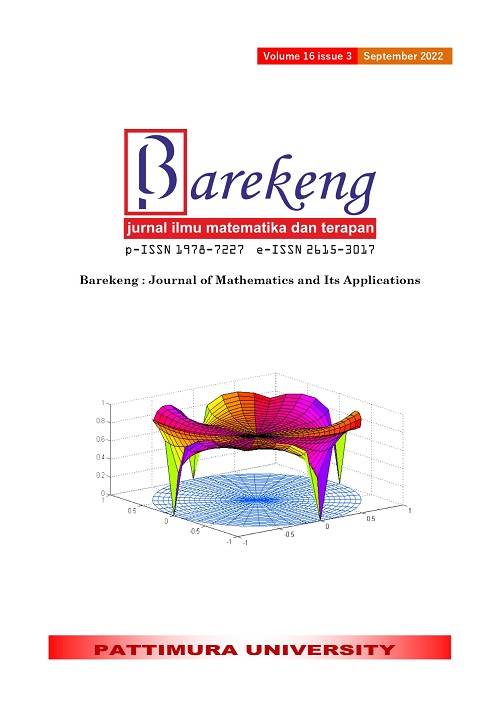SELECTING OPTIMAL PROCESS PARAMETERS OF Al2O3/C COMPOSITE USING GRA WITH PCA AND TAGUCHI’S QLF APPROACH
Abstract
The aim of this study is to find the controlled factors affecting the mass density of the combined Al2O3/Cu. All experiments were carried out using powder metallurgy. Experiments were carried out with four controllable powder processing parameters, namely milling time, compaction pressure, sintering temperature, and holding time. The L18 mixed-level Taguchi Orthogonal Array was used for experimental because it is the basis for the analysis of the Taguchi method. In this research, statistical analysis is carried out using GRA with PCA and Quality Loss Function. The result was the best model based on the Quality Loss Function, because the method has the biggest determination coefficient value is 99,97% where the results is better than GRA with PCA. From the main effect table study, the optimal combination of parameters for response: mass density and hardness are A2B3C3D2 powder metallurgical process parameters, namely milling time of 360 minutes, compacting powder of 200 MPa, sintering of 7000C, and holding time of 20 minutes. The ANOVA results show that the compaction pressure has the most influential parameter that affects the response. The percentage contribution of compaction pressure is 87.09%. Based on ANOVA, the R-squared value is 99.97%, which means the tested factor variables can explain the density of the Al2O3/Cu composite by 99.70%. Therefore, only 18 experimental trials are needed to discover the reality of what will happen in the process.
Downloads
References
D. D. L. Chung, Composite materials: science and applications. Springer Science & Business Media, 2010.
M. Z. Hussain, S. Khan, R. Nagarajan, U. Khan, and V. Vats, “Fabrication and microhardness analysis of MWCNT/MnO2 nanocomposite,” J. Mater., vol. 2016, p. 6070468, 2016.
P. B. Zaman, M. N. Sultana, and N. R. Dhar, “Multi-variant hybrid techniques coupled with Taguchi in multi-response parameter optimisation for better machinability of turning alloy steel,” Adv. Mater. Process. Technol., pp. 1–21, 2021.
N. M. Mehat, S. Kamaruddin, A. R. Othman, N. M. Mehat, S. Kamaruddin, and A. R. Othman, “Hybrid integration of taguchi parametric design, grey relational analysis, and principal component analysis optimization for plastic gear production,” Chinese J. Eng., vol. 351206, no. 1–11, p. 2014, 2014.
V. N. Gaitonde and S. R. Karnik, “Selection of optimal process parameters for minimizing burr size in drilling using Taguchi’s quality loss function approach,” J. Brazilian Soc. Mech. Sci. Eng., vol. 34, pp. 238–245, 2012.
M. Z. Hussain, S. Khan, and P. Sarmah, “Optimization of powder metallurgy processing parameters of Al2O3/Cu composite through Taguchi method with Grey relational analysis,” J. King Saud Univ. Sci., vol. 32, no. 4, pp. 274–286, 2020.
B. Hsueh, W. Lin, C. Huang, and B. Wu, “Application of Fuzzy-Taguchi theory in the optimization of teaching method and process design,” in Journal of Physics: Conference Series, 2021, vol. 1976, no. 1, p. 12073.
R. K. Roy, A primer on the Taguchi method. Society of Manufacturing Engineers, 2010.
I. O. Fagbolagun and S. A. Oke, “The optimization of packaging system process parameters using Taguchi method,” Int. J. Ind. Eng. Eng. Manag., vol. 2, no. 1, pp. 1–14, 2020.
B. Varghese and N. Philip, “A Review: Taguchi Experiment Design for Investigation of Properties of Concrete,” Int. J. Civ. Eng., vol. 5, no. 6, pp. 11–16, 2016.
G. Sun, J. Fang, X. Tian, G. Li, and Q. Li, “Discrete robust optimization algorithm based on Taguchi method for structural crashworthiness design,” Expert Syst. Appl., vol. 42, no. 9, pp. 4482–4492, 2015.
M. Zaid, “Taguchi Optimization Method for Identifying Surface Roughness,” MECHANICAL, vol. 2, no. 1, 2011.
E. Ginting and M. M. Tambunan, “Selection of Optimal Factor Level From Process Parameters in Palm Oil Industry,” in IOP Conference Series: Materials Science and Engineering, 2018, vol. 288, no. 1, p. 12056.
S. K. Jha, “Parametric optimization of turning process using Taguchi method and ANOVA analysis,” Int. J. Adv. Eng. Technol., vol. 9, no. 3, p. 289, 2016.
S. Raghuraman, K. Thiruppathi, T. Panneerselvam, and S. Santosh, “Optimization of EDM parameters using Taguchi method and grey relational analysis for mild steel IS 2026,” Int. J. Innov. Res. Sci. Eng. Technol., vol. 2, no. 7, pp. 3095–3104, 2013.
L. Singh, R. A. Khan, and M. L. Aggarwal, “Multi performance characteristic optimization of shot peening process for AISI 304 austenitic stainless steel using grey relational analysis with principal component analysis and Taguchi method,” Am. J. Eng. Res., vol. 2, no. 10, pp. 160–172, 2013.
R. N. Henson, “Analysis of variance (ANOVA),” Brain Mapp. an Encycl. Ref. Elsevier, pp. 477–481, 2015.
H. Y. Wang, Q. C. Jiang, Y. Wang, B. X. Ma, and F. Zhao, “Fabrication of TiB2 particulate reinforced magnesium matrix composites by powder metallurgy,” Mater. Lett., vol. 58, no. 27–28, pp. 3509–3513, 2004.
Copyright (c) 2022 Idrus Syahzaqi, Hani Brilianti Rochmanto, Muhammad Ahsan

This work is licensed under a Creative Commons Attribution-ShareAlike 4.0 International License.
Authors who publish with this Journal agree to the following terms:
- Author retain copyright and grant the journal right of first publication with the work simultaneously licensed under a creative commons attribution license that allow others to share the work within an acknowledgement of the work’s authorship and initial publication of this journal.
- Authors are able to enter into separate, additional contractual arrangement for the non-exclusive distribution of the journal’s published version of the work (e.g. acknowledgement of its initial publication in this journal).
- Authors are permitted and encouraged to post their work online (e.g. in institutional repositories or on their websites) prior to and during the submission process, as it can lead to productive exchanges, as well as earlier and greater citation of published works.






1.gif)



